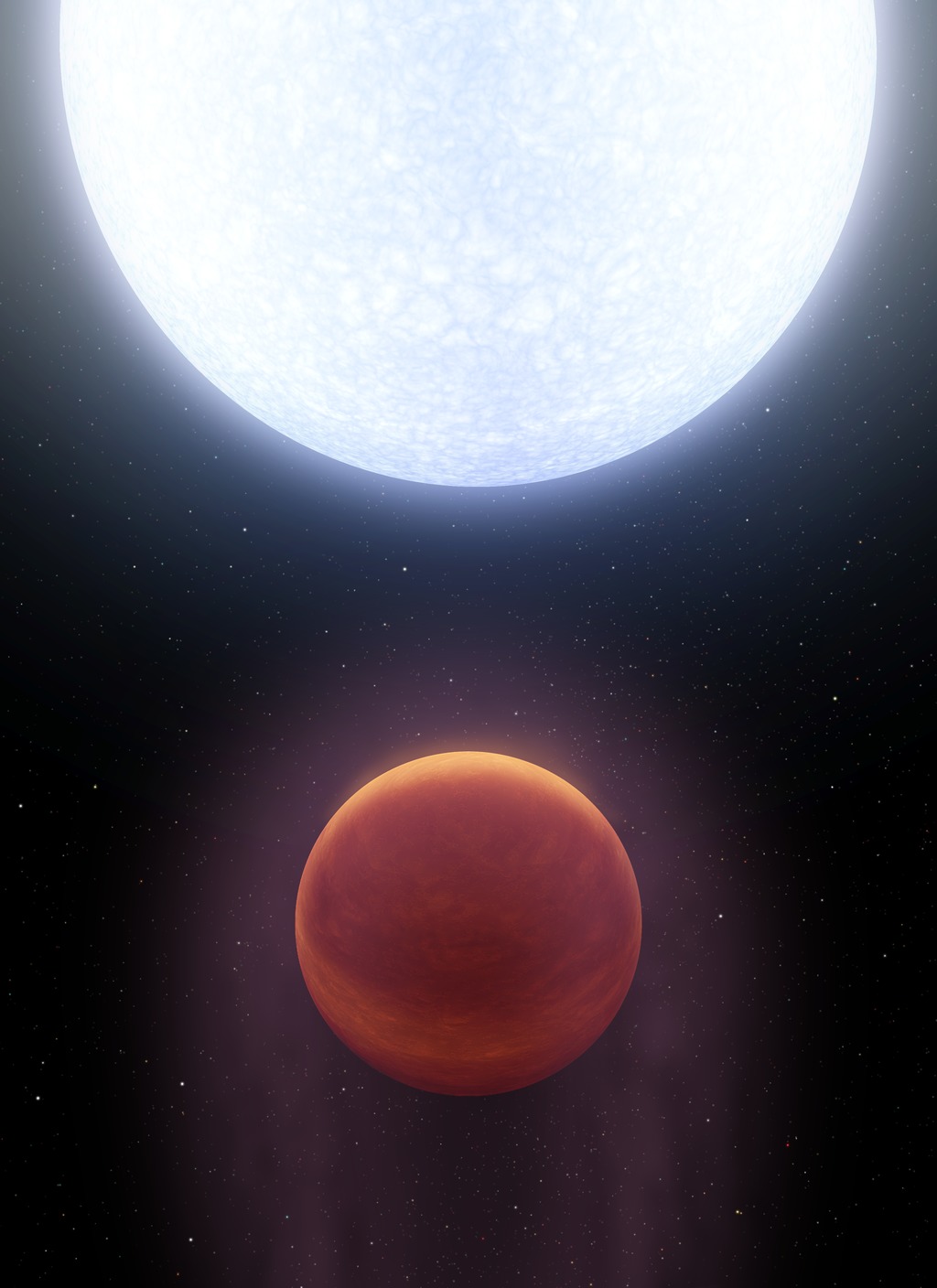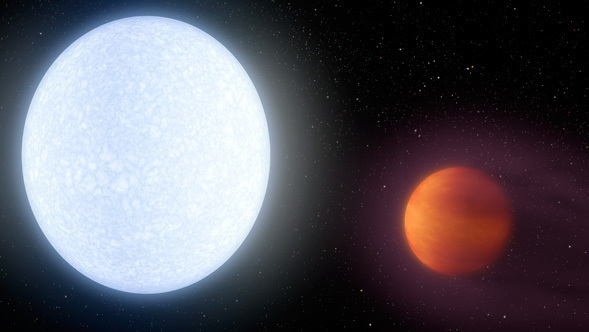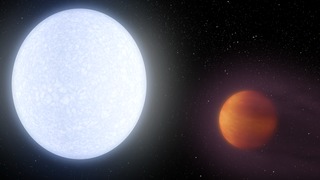
Credit: NASA/JPL-Caltech/R. Hurt (IPAC)
Artwork • January 28th, 2020 • ssc2020-04b
ssc2020-04b
This artist's concept shows planet KELT-9b orbiting its host star, KELT-9. It is the hottest gas giant planet discovered so far.
Now, a team of astronomers using NASA's Spitzer space telescope has found evidence that the heat is too much even for molecules to remain intact. Molecules of hydrogen gas are likely ripped apart on the dayside of KELT-9b, unable to re-form until their disjointed atoms flow around to the planet's nightside.
With a dayside temperature of more than 7,800 degrees Fahrenheit (4,600 Kelvin), KELT-9b is a planet that is hotter than most stars. But its star, called KELT-9, is even hotter -- a blue A-type star that is likely unraveling the planet through evaporation.
KELT-9b is a gas giant 2.8 times more massive than Jupiter, but only half as dense. Scientists would expect the planet to have a smaller radius, but the extreme radiation from its host star has caused the planet's atmosphere to puff up like a balloon.
The planet is also unusual in that it orbits perpendicular to the spin axis of the star. That would be analogous to the planet orbiting perpendicular to the plane of our solar system. One "year" on this planet is less than two days long.
The KELT-9 star is only 300 million years old, which is young in star time. It is more than twice as large, and nearly twice as hot, as our sun. Given that the planet's atmosphere is constantly blasted with high levels of ultraviolet radiation, the planet may even be shedding a tail of evaporated planetary material like a comet.
About the Object
- Name
- Kelt-9b
- Type
- Planet > Type > Gas Giant
- Distance
- 720 Light Years







